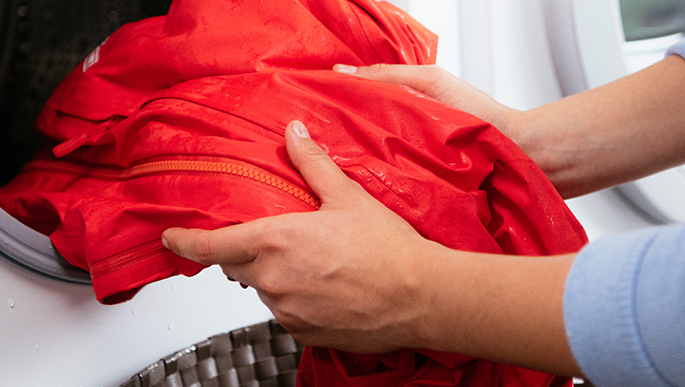How to Care for Your Sleeping Bag

Your sleeping bag is your sanctuary after a long day on the trail, and with proper care, it can stay warm and cozy for years to come. Here’s a comprehensive guide on how to keep your sleeping bag in top condition, ensuring many restful nights in the great outdoors.
Caring for Your Sleeping Bag in Camp
Whether you have a down or synthetic bag, keeping it clean, dry, and protected during your camping trips will extend its lifespan and maintain its insulating power. Here are some key tips:
- Wear Clean Sleepwear: Change into clean long underwear and socks before getting into your sleeping bag. This reduces the buildup of body oils, sweat, and dirt, which can degrade the bag's insulation. A clean tee and underwear will suffice in warmer weather. Also, consider wearing a knit cap or bandana to keep hair oils off the bag's hood.
- Use a Sleeping Bag Liner: Liners made of cotton, silk, wool, or polyester act as a barrier between you and your sleeping bag, keeping it cleaner for longer. They can also add extra warmth. After each trip, simply wash the liner.
- Ground Protection: If sleeping under the stars, always use a sleeping pad to protect the bottom of your bag from sticks and rough ground. Some bags have durable waterproof fabric on the underside, but additional protection is always beneficial.
- Gentle Use: Avoid standing or jumping around while inside your sleeping bag to prevent damaging the foot box. If you plan to sit by a campfire, use an older synthetic bag to avoid damaging your primary down bag with sparks.
- Lend with Care: If lending your sleeping bag to a friend, set some ground rules and ensure they use a liner. Demonstrate how to properly use the zippers and cords to avoid damage.
- Handle Zippers Gently: Practice using your sleeping bag’s zippers at home to prevent frustration and potential damage during use in the field. Be patient to avoid snags and tears.
- Daily Airing: Air out your sleeping bag daily by turning it inside out to dry any moisture. Avoid prolonged exposure to direct sunlight to prevent UV damage.
How to Pack and Store Your Sleeping Bag
Proper packing and storage can significantly extend the life of your sleeping bag. Here's how to do it right:
Packing Tips:
- Start at the Foot: Begin stuffing your sleeping bag from the foot end, pushing it into the bottom of the stuff sack. This method helps expel air and evenly distributes stress on the seams.
- Inside Out for Waterproof Bags: If your bag has a waterproof shell, turn it inside out before packing to prevent trapped air from creating a balloon effect.
- Use a Larger Stuff Sack: Opt for a slightly larger stuff sack to make packing easier and reduce stress on the fabric.
- Compression Sacks: Compression sacks can save space in your backpack, but avoid keeping your bag compressed for extended periods to preserve loft.
- Waterproof Sacks: For rainy conditions, use a waterproof stuff sack or line a regular one with a plastic bag to keep your sleeping bag dry.
Storage Tips:
- Loose Storage: Store your sleeping bag loosely in a large cotton or mesh sack to maintain its loft. Avoid long-term compression in its stuff sack.
- Air Out After Trips: When you return from a trip, unzip your bag and air it out completely to ensure it’s dry before storing.
Cleaning Your Sleeping Bag
Regular cleaning can extend the life of your sleeping bag, but it should be done carefully to avoid damage. Here’s how to clean your sleeping bag, whether it’s down or synthetic.
Spot Cleaning:
- Light Cleaning: For small, dirty spots, make a paste of mild soap and water and gently scrub with a toothbrush. Focus on the hood and collar where oils tend to accumulate.
Full Cleaning:
- Follow Manufacturer Instructions: Always check the manufacturer’s instructions for specific cleaning guidelines.
- Professional Cleaning: For down bags, consider professional cleaning services. Monod Sports partners with specialized cleaners to ensure your bag gets the best care.
- Home Washing: Use a front-loading washing machine with a gentle, non-detergent soap. Rinse thoroughly to remove all soap residue. For hand washing, fill a tub with water and soap, gently work it through, and rinse well.
- Drying: Dry your bag in a large dryer on low heat with clean tennis balls to help restore loft. Ensure it’s completely dry before storing.
What Not to Do:
- Avoid Dry Cleaning: The chemicals used in dry cleaning can strip the natural oils from down insulation.
- No Fabric Softeners or Bleach: These can damage the fabric and insulation.
- No Top-Loading Washers with Agitators: The agitator can damage seams and fabric.
Additional Care Tips
- Restore Water Repellency:Over time, the durable water repellent (DWR) finish on your bag's shell can wear off. Use a DWR restoration product to keep it effective.
- Inspect for Damage: Regularly check for and repair small tears or holes to prevent insulation loss. Use adhesive patches or sew small rips to extend the bag’s life.
Your sleeping bag is a key investment in your outdoor gear. A little care goes a long way in preserving its performance and extending its lifespan. Whether you’re heading out for a weekend in the woods or a month-long trek, these simple steps will keep your sleeping bag ready for the journey.
- Tags: Camping






